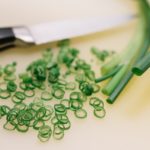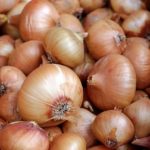What I Learned In Knife Class 101
Since I have finally become a responsible adult, I decided I ought to know how to properly use kitchen knives. This being the case, I took a Basic Knife Skills class this week.
I visited Mrs. Dornberg’s Culinary Experience in Highland for this specialty class. After two hours of slicing, dicing, and chopping, I realized I have been doing some things the hard way for my entire cooking life.

THE LESSON: we aren’t born knowing how to do most things, so at some point we need to learn. My knife skills were the ones I learned from my mom, who probably learned from her mom.
The same principles go for cooking, baking, homemaking, parenting, and so on. YouTube, and television don’t allow for hands-on experience and correction.
A few knife tips, just in case you’re curious:
- The chef’s knife, typically with an 8-inch blade, is used for 90% of our cutting needs. (I rarely used this knife. Oops.)
- A paring knife is used 10% of the time.
- The serrated knife is used to slice bread.
These are really the only three knives you need. (Better not tell the Cutco people.)
Sharp knives are a must. Oh, and if you cut yourself, the wound heals quicker than if you had used a dull knife.
As we practiced the proper way to use sharp knives, bad habits emerged. Do you typically scrape your chopped food off the cutting board with the knife? Time to retrain and use a plastic scraper instead.
I have several habits that I need to break in order to be more efficient and make prep time easier. Practice, practice, practice.
Oh, and did you know there are goggles you can get so the onions won’t make you cry? True! 
If you find cooking a challenge, I suggest you check out Mrs. Dornberg’s Culinary Experience. The skills you learn from her make the process much easier—and fun.
If you have some food and fitness habits that could use some work, I’m your girl. Together, we’ll practice better habits so this will be much easier—and fun.
“A sharp knife cuts the quickest and hurts the least.”—Katharine Hepburn


